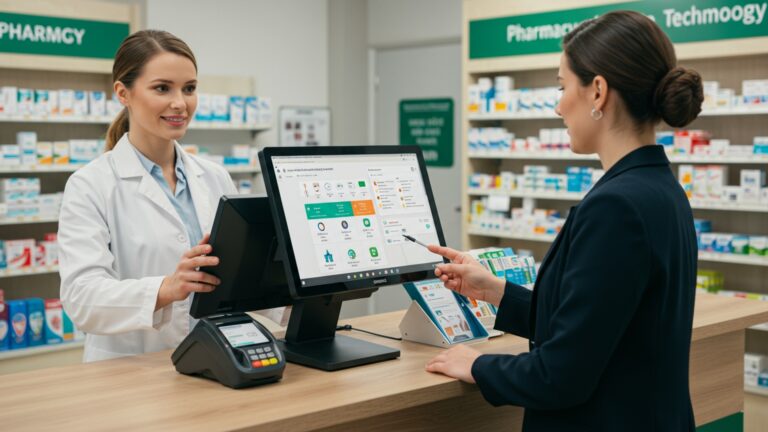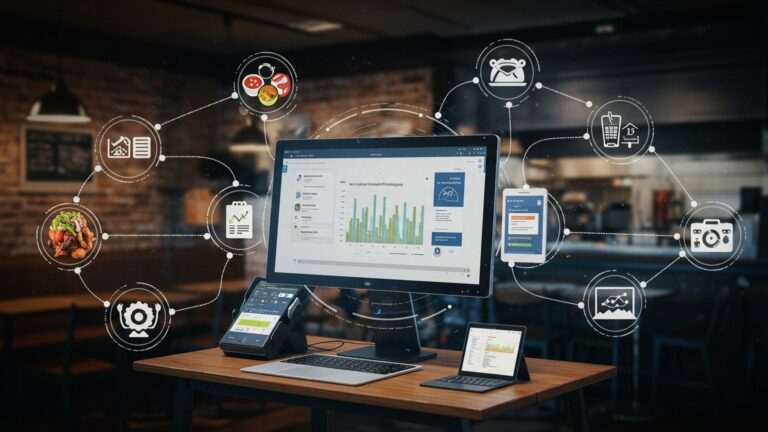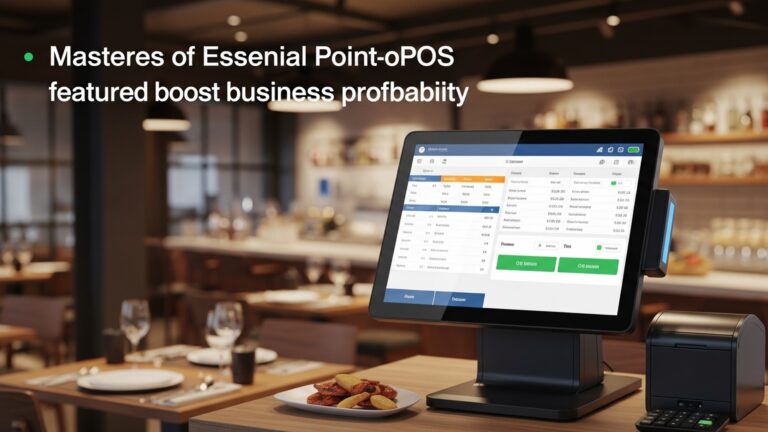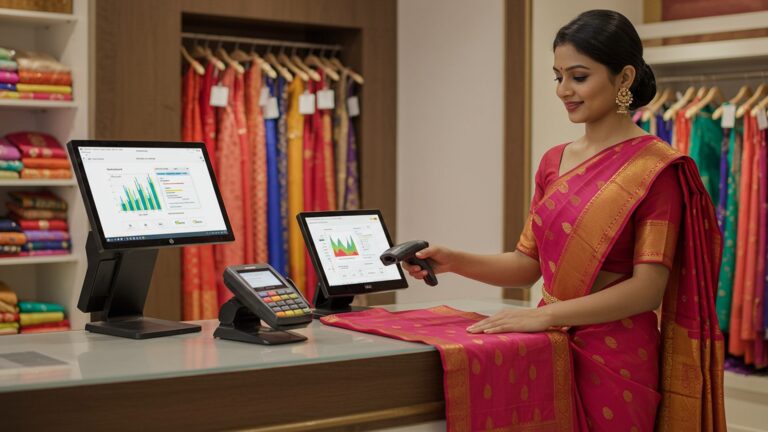Top 8 Benefits of Modern Pharmacy POS Software Solutions
In today’s dynamic healthcare environment, community pharmacies navigate complex operational challenges ranging from managing intricate inventory to ensuring stringent compliance. A modern pharmacy POS software solution transcends mere transaction processing, evolving into a critical operational backbone that drives efficiency and elevates patient care. These sophisticated systems now seamlessly integrate with electronic health records and telehealth platforms, empowering pharmacists to manage real-time inventory for both controlled substances and high-demand OTC products, while significantly reducing dispensing errors. They automate complex insurance claim submissions, facilitate personalized medication adherence programs through AI-driven reminders. leverage advanced analytics for proactive demand forecasting, ensuring pharmacies remain agile and patient-centric amidst a rapidly changing landscape.
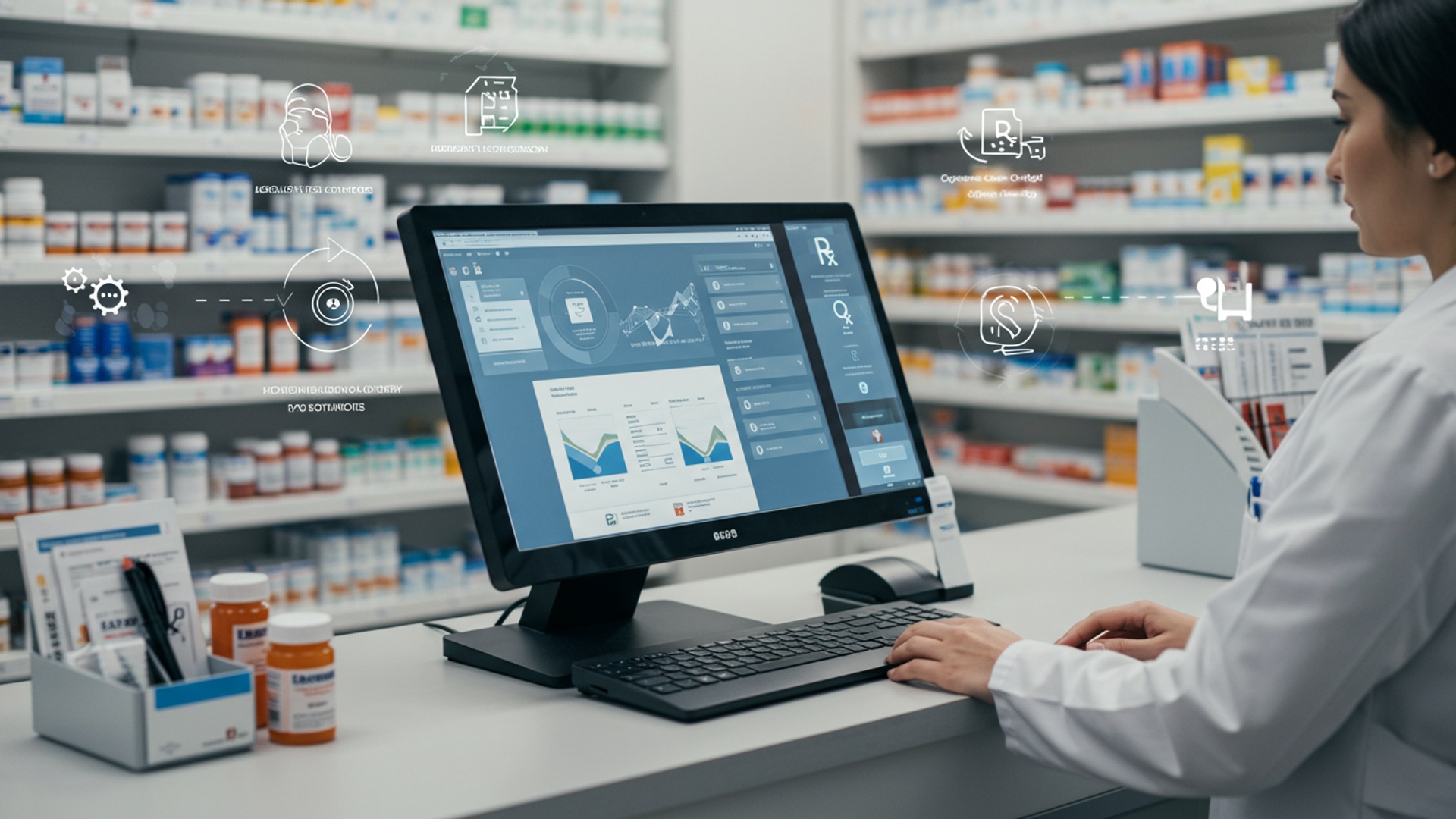
Understanding Modern Pharmacy POS Software
- Point-of-Sale (POS) system
- pharmacy POS software
1. Enhanced Inventory Management and Loss Prevention
One of the most immediate and significant advantages of modern pharmacy POS software is its sophisticated approach to inventory management. Pharmacies deal with thousands of SKUs, many of which are temperature-sensitive, have strict expiration dates, or require careful tracking due to their controlled substance status. Traditional manual tracking or basic retail POS systems simply cannot keep up.
- Real-time Tracking
- Automated Reordering
- Expiration Date Management
- Loss Prevention
Modern systems provide real-time updates on stock levels for every medication, over-the-counter (OTC) product. medical supply. When a prescription is dispensed or an item sold, the inventory is automatically adjusted. This prevents stockouts of critical medications and overstocking of slow-moving items.
Based on historical sales data and predefined thresholds, the software can automatically generate purchase orders, alerting pharmacists when stock levels are low. This streamlines the procurement process, reduces administrative burden. ensures shelves are always adequately stocked.
The software tracks expiration dates, providing alerts for products nearing their expiry. This is crucial for patient safety and minimizes financial losses from expired inventory.
By meticulously tracking every item from receipt to dispense or sale, the system helps identify discrepancies, reduce shrinkage. deter internal theft. Advanced systems can even integrate with security cameras for a holistic loss prevention strategy.
For example, a pharmacy using a modern system can quickly identify if a specific dosage of insulin is running low across multiple locations, trigger an automated reorder. prevent potential patient treatment delays. This level of precision was once a dream for many independent pharmacies.
2. Streamlined Prescription Processing and Dispensing
At the heart of any pharmacy operation is prescription processing. Modern pharmacy POS software revolutionizes this critical function, moving far beyond simple data entry to create an integrated, error-resistant workflow.
- E-Prescribing Integration
- Automated Adjudication
- Patient Counseling Prompts
- Workflow Automation
Seamlessly integrating with e-prescribing platforms allows prescriptions to be received electronically directly from prescribers. This eliminates manual data entry errors, speeds up the process. improves legibility, significantly reducing the risk of misinterpretation.
The software can automatically submit claims to insurance providers in real-time, checking for coverage, co-pays. deductibles before the patient even reaches the counter. This reduces claim rejections and provides patients with immediate, accurate cost details.
To enhance patient safety and compliance, the system can prompt pharmacists with essential counseling points specific to the medication being dispensed, ensuring critical data about dosage, side effects. interactions is communicated.
Tasks like label printing, patient profile updates. inventory deduction are automated, freeing up valuable pharmacist and technician time to focus on patient care rather than administrative tasks.
Consider a scenario where a patient presents a new prescription. With an integrated pharmacy POS software, the prescription arrives digitally, the system flags potential drug-drug interactions, automatically verifies insurance, calculates the co-pay, prints the label. updates the patient’s profile—all within minutes. This efficiency is a game-changer.
3. Improved Customer Experience and Loyalty
In today’s competitive healthcare landscape, patient experience is paramount. Modern pharmacy POS software plays a vital role in fostering patient satisfaction and building long-term loyalty.
- Faster Service
- Personalized Interactions
- Automated Reminders and Refills
- Loyalty Programs Integration
By streamlining prescription processing and checkout, wait times are drastically reduced. Patients appreciate quick, efficient service, especially when they are not feeling well.
The software maintains comprehensive patient profiles, including medication history, allergies. preferences. This allows pharmacists to offer personalized advice and identify potential issues, enhancing the perception of care.
Systems can send automated SMS or email reminders for prescription refills, pick-ups. even medication adherence. This proactive communication improves patient outcomes and convenience.
Many advanced POS solutions integrate loyalty programs, allowing pharmacies to reward frequent customers with discounts or special offers, further incentivizing repeat business.
A personal anecdote: I recall a small independent pharmacy that implemented a new pharmacy POS software. Within months, their customer satisfaction scores improved by 20%, largely due to reduced wait times and the ability of their pharmacists to engage more meaningfully with patients, thanks to readily available patient histories at their fingertips. This direct impact on patient perception translates into tangible business growth.
4. Robust Reporting and Business Intelligence
Data is the new currency. modern pharmacy POS software provides an invaluable treasury of it. Beyond just processing sales, these systems offer powerful reporting and analytics capabilities that empower pharmacists and owners to make informed business decisions.
- Sales Performance Analysis
- Inventory Turnover Reports
- Patient Demographics and Purchase History
- Staff Performance Metrics
Track sales trends by product, category, time of day, or pharmacist. Identify best-selling items, grasp seasonal demand. optimize pricing strategies.
Gain insights into how quickly products are selling. This helps optimize inventory levels, reduce carrying costs. prevent dead stock.
comprehend your patient base better. Identify common health conditions, track adherence rates. tailor marketing efforts.
Monitor transaction times, error rates. sales per employee to identify training needs and optimize staffing schedules.
For instance, a pharmacy manager can pull a report showing that a particular brand of blood pressure medication has seen a 15% increase in demand over the last quarter. This data allows them to proactively adjust inventory levels and potentially negotiate better bulk pricing with suppliers, directly impacting profitability.
5. Enhanced Regulatory Compliance and Data Security
Pharmacies operate in a highly regulated environment, with strict requirements regarding patient privacy and controlled substances. Modern pharmacy POS software is built with compliance and security as core tenets.
- HIPAA Compliance
- Controlled Substance Tracking
- Audit Trails
- Data Backup and Recovery
These systems are designed to protect Protected Health details (PHI) in accordance with HIPAA regulations, employing robust encryption, access controls. audit trails. This is critical for maintaining patient trust and avoiding hefty fines.
Specialized modules allow for meticulous tracking of controlled substances from receipt to dispense, simplifying reporting to state and federal agencies (e. g. , PDMP – Prescription Drug Monitoring Programs) and reducing diversion risks.
Every transaction, every access to a patient record. every inventory adjustment is logged, creating a comprehensive audit trail. This is invaluable for internal reviews and external audits.
Cloud-based pharmacy POS software solutions often include automated data backup and disaster recovery protocols, ensuring business continuity even in the face of hardware failure or other unforeseen events.
The Drug Enforcement Administration (DEA) and state boards of pharmacy regularly audit pharmacies. Having a system that can instantly provide accurate records of every Schedule II medication dispensed, complete with patient and prescriber details, is not just a convenience—it’s a legal necessity. A robust pharmacy POS software minimizes the stress and complexity of these audits.
6. Optimized Workflow and Staff Efficiency
One of the most profound impacts of modern pharmacy POS software is its ability to transform daily operations, leading to significant improvements in workflow efficiency and staff productivity.
- Reduced Manual Tasks
- Centralized insights
- Role-Based Access
- Task Management
Automation of tasks such as inventory updates, claim submissions. patient data entry frees up pharmacists and technicians from time-consuming administrative burdens.
All critical data—patient profiles, prescription history, insurance details, inventory levels—is accessible from a single, integrated platform. This eliminates the need to switch between multiple systems or consult physical records.
The software allows for different levels of access based on staff roles, ensuring that technicians can perform their duties efficiently while only authorized personnel can access sensitive details or critical functions.
Some systems include built-in task management features, allowing staff to track prescriptions through different stages (e. g. , “received,” “filled,” “verified,” “ready for pickup”), ensuring no task is overlooked.
Consider a busy Saturday afternoon in a community pharmacy. Without modern pharmacy POS software, a technician might spend valuable minutes manually checking stock, calling an insurance company. then physically retrieving a patient’s paper chart. With the software, these steps are automated or instantly accessible, allowing them to process more prescriptions accurately and serve more patients effectively, reducing queue times and staff stress.
7. Seamless Integration Capabilities
The true power of modern pharmacy POS software lies in its ability to integrate with other vital systems within the healthcare ecosystem. This interoperability creates a cohesive, data-rich environment that benefits patients, providers. the pharmacy itself.
Here’s a comparison of integrated vs. non-integrated systems:
| Feature | Non-Integrated System (Legacy/Basic POS) | Modern Integrated Pharmacy POS Software |
|---|---|---|
| E-Prescribing | Requires manual transcription, fax, or phone calls. High error risk. | Direct electronic receipt of prescriptions from prescribers. Error reduction. |
| Electronic Health Records (EHR) | Separate patient records, requires manual updates or data transfer. | Two-way communication with EHRs, providing a holistic patient view. |
| Insurance Adjudication | Manual entry of insurance details, phone calls for clarification, delayed claims. | Real-time electronic claims submission and adjudication. Reduced rejections. |
| Inventory Suppliers | Manual ordering, separate systems for different suppliers. | Automated ordering directly from distributors based on stock levels. |
| Patient Communication | Manual calls for refills, limited personalized outreach. | Automated SMS/email reminders, personalized health messages. |
- EHR/EMR Systems
- Wholesalers and Distributors
- Accounting Software
- Telehealth Platforms
Integration allows for a complete view of a patient’s health, including diagnoses, lab results. medication history, enabling pharmacists to identify potential contraindications or optimize therapy.
Automated ordering directly from suppliers based on real-time inventory levels streamlines procurement and ensures consistent stock.
Seamlessly transfer sales data, expenses. inventory valuations to accounting platforms, simplifying financial management and tax preparation.
As telehealth grows, integration can facilitate remote prescription fulfillment and patient consultations.
This level of integration transforms the pharmacy from an isolated entity into a key player in the patient’s overall healthcare journey, enabling collaborative care and better patient outcomes.
8. Reduced Errors and Increased Patient Safety
Perhaps the most critical benefit, given the nature of pharmacy work, is the significant reduction in medication errors and the subsequent enhancement of patient safety. Errors in dispensing can have severe, even life-threatening, consequences.
- Drug-Drug Interaction Alerts
- Allergy Alerts
- Dosage and Duplication Checks
- Barcode Scanning
The software automatically cross-references new prescriptions with a patient’s existing medication profile and alerts the pharmacist to potential harmful interactions.
Similarly, it flags potential allergic reactions based on recorded patient allergies.
The system can detect incorrect dosages or inadvertent duplication of medications, prompting the pharmacist for verification.
From receiving inventory to dispensing prescriptions, barcode scanning ensures that the right medication, in the right dosage, is given to the right patient, significantly reducing human error during the critical dispensing step.
A study published by the National Institutes of Health (NIH) highlighted that technology, specifically integrated pharmacy systems, plays a crucial role in mitigating medication errors, citing a substantial decrease in dispensing errors where such systems were effectively utilized. This isn’t just about efficiency; it’s about saving lives and maintaining public trust in healthcare providers. A well-implemented pharmacy POS software acts as a vital safety net.
Conclusion
Adopting modern pharmacy POS software is no longer merely an option. a strategic imperative for operational excellence and superior patient care. My personal tip: start by conducting a thorough audit of your current operational bottlenecks, from inventory management frustrations to long patient wait times; clarity on these pain points will undeniably streamline your selection process for a truly transformative solution. Look for systems that go beyond basic transactions, integrating innovative features like predictive analytics for inventory management, a vital current trend that minimizes waste and ensures critical medications are always in stock. I recall a pharmacist friend who dramatically reduced expired product losses by leveraging such data, freeing up capital for other essential services. This proactive approach, rather than reactive stock management, is key in today’s evolving healthcare landscape. Ultimately, embracing a robust pharmacy POS empowers your entire team, enhancing efficiency and elevating the patient experience. By making this investment, you’re not just acquiring software; you’re building a resilient future for your pharmacy, ensuring compliance, boosting profitability. solidifying your crucial role as a trusted community health hub. For further insights, exploring how to select and implement POS software can provide invaluable guidance.
More Articles
5 Essential Features Your Pharmacy Management Software Must Have
Discover 7 Essential Features Your Pharmacy POS System Must Include
How to Choose the Best POS Software in India Your Essential Guide
How to Maximize Retail Sales With Powerful POS Software
Maximize Profit Learn 7 Smart Inventory Management Strategies for Indian POS
FAQs
Why should my pharmacy even bother with new POS software? What’s the big deal?
Modern pharmacy POS isn’t just a fancy cash register; it’s a comprehensive system designed to make your pharmacy run significantly smoother. Think faster checkouts, fewer mistakes with prescriptions. much better inventory tracking. It truly streamlines your daily tasks and helps you serve patients more efficiently.
How does this software help with all the stock we have?
It’s a game-changer for inventory management! You get real-time tracking of every item, automated reorder alerts so you never run out of crucial medications. insights into what’s selling fast or gathering dust. This means less waste, better stock rotation. a more organized backroom.
Can it actually make things safer for our patients?
Absolutely. Patient safety is a top priority for modern pharmacy POS. These systems often include features like automated drug interaction warnings, allergy alerts. prescription verification steps that significantly reduce the chance of dispensing errors, adding a crucial layer of safety for your patients.
Will our checkout lines move faster with new POS?
Definitely! Modern POS systems are built for speed and efficiency. They simplify the entire transaction process, from scanning items and processing payments to managing insurance claims quickly. Your staff can serve more patients in less time, drastically cutting down on wait times and improving the patient experience.
What about the business side? Can it help with our finances and tracking?
Yes, it provides robust reporting and analytics tools. You can easily track sales performance, monitor profit margins, identify peak business hours. get clear financial summaries. This data is incredibly helpful for making smart business decisions and keeping a healthy financial pulse on your pharmacy.
Does it offer anything to keep customers coming back?
Many modern POS solutions include features for loyalty programs, personalized promotions. detailed patient profiles. This allows you to offer a more tailored and engaging experience, making patients feel valued and encouraging them to return for their future pharmacy needs.
Is it a pain to keep up with all the regulations? Can the software help with compliance?
It can make compliance much easier. These systems are often designed with regulatory requirements in mind, helping you track controlled substances, maintain accurate dispensing records. generate necessary reports for audits. This significantly reduces the administrative burden and helps ensure you stay compliant with industry standards.

